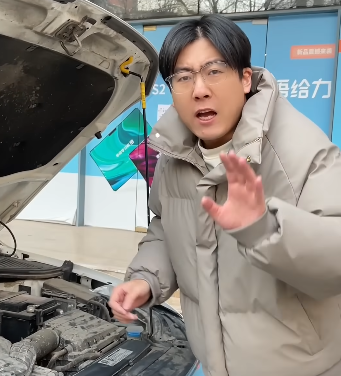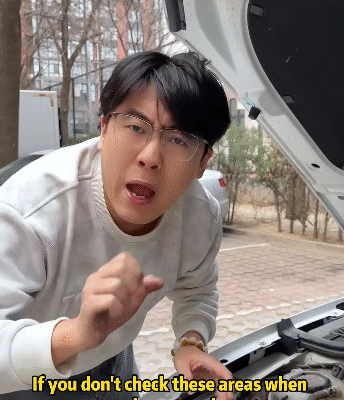
Planning a long drive can be exciting, whether you’re heading for a road trip, a family visit, or a business journey. However, before you hit the road, ensuring that your vehicle is in top condition is essential for safety and comfort. Neglecting to check your car beforehand can lead to unexpected breakdowns, costly repairs, or even dangerous situations. To avoid such issues, you need to perform a thorough pre-drive inspection. Below are key areas to check before starting your long drive.
1. Check the Engine Oil
Engine oil is the lifeblood of your vehicle. It lubricates the engine components and prevents overheating. Before a long journey, check the oil level using the dipstick under the hood. Ensure the oil level is between the minimum and maximum marks and that the oil is clean. If it appears dark or dirty, it’s wise to change it before your trip. Also, check when your last oil change was done—if you’re close to your service interval, do it before hitting the road.
2. Inspect Coolant Levels
Your engine relies on coolant (or antifreeze) to stay at the right temperature. Low coolant levels can lead to overheating, especially on long trips or during hot weather. Check the coolant reservoir under the hood and make sure the liquid is at the proper level. If you notice a coolant leak or if the fluid appears rusty or dirty, have it serviced. Overheating on the highway can ruin your trip and your engine.

3. Examine Tire Pressure and Condition
Tires are your car’s direct contact with the road, so they must be in excellent condition. Check the tire pressure using a reliable gauge and inflate them to the manufacturer’s recommended levels, which you’ll usually find on a sticker in the driver’s door frame or in the owner’s manual. Driving with underinflated or overinflated tires can reduce fuel efficiency and increase the risk of blowouts.
Additionally, inspect tire tread depth. Worn-out tires have less grip, which can be dangerous in wet conditions. Use the penny test or a tread depth gauge to check for wear. Don’t forget to check your spare tire as well—it should be fully inflated and ready to use if needed.
4. Check Brakes
Your brakes are arguably the most important safety feature of your car. Listen for squeaking or grinding sounds when braking, which could indicate worn brake pads. If your brake pedal feels soft or spongy, have the system checked immediately. It’s also a good idea to ensure your brake fluid is at the proper level, as low fluid can reduce braking performance. A brake inspection before a long drive offers peace of mind.
5. Test Lights and Indicators
Visibility is crucial for safe driving, especially if you’ll be traveling during the night or in bad weather. Check all exterior lights: headlights, tail lights, brake lights, and turn signals. Make sure they’re working correctly and replace any burned-out bulbs. Don’t forget your interior lights, which you might need during the trip.

6. Top Up Other Fluids
Aside from engine oil and coolant, your car relies on several other fluids. These include:
- Windshield washer fluid – Essential for keeping your windshield clean and your view unobstructed.
- Transmission fluid – If your car is automatic, ensure it’s at the proper level and in good condition.
- Power steering fluid – Low fluid can make steering difficult.
- Brake fluid – Crucial for proper braking performance.
Top off these fluids as needed, and if any look dirty or contaminated, consider replacing them.
7. Inspect Belts and Hoses
Belts and hoses under the hood can wear out over time. Look for cracks, fraying, or bulges. A broken belt or burst hose can leave you stranded. If you hear squealing from the engine bay or see leaks, have these parts inspected by a mechanic before your journey.
8. Battery Health
A weak or old battery might fail when you least expect it. Check the battery terminals for corrosion and ensure they’re tightly connected. If your battery is more than three years old, have it tested at a service center. Carrying jumper cables or a portable jump starter is a smart precaution on long drives.
9. Wipers and Windshield
Good visibility is essential for safe driving. Check your windshield wipers to ensure they aren’t streaking or skipping. If they’re old or damaged, replace them. Also, check your windshield for cracks or chips, as they can worsen during the drive. Clean the windshield thoroughly before you go.

10. Emergency Kit
Even if you’ve prepared your car perfectly, emergencies can still happen. An emergency kit can make a huge difference in case of a breakdown. Your kit should include:
- A spare tire, jack, and lug wrench
- Jumper cables or a jump starter
- A flashlight with extra batteries
- First-aid kit
- Basic tools (screwdrivers, pliers, adjustable wrench)
- Tire inflator or sealant
- Reflective warning triangles
- A blanket, water, and snacks
These items can help you handle unexpected situations while waiting for roadside assistance.
11. Plan Your Route and Fuel Stops
While this isn’t strictly about your car, it’s a vital part of preparation. Plan your route ahead of time and check for road closures or construction that may affect your journey. Make sure you know where the gas stations are along the way, especially if you’ll be driving through remote areas. Keeping your tank at least half full during a long drive is a good rule of thumb.
12. Check Air Conditioning and Heating
A long drive can become uncomfortable without proper climate control. Test your air conditioning and heating systems before you leave, especially if you’re traveling in extreme weather conditions. This step ensures comfort and prevents potential fogging on your windows.

13. Ensure Proper Load and Weight
If you’re carrying luggage or equipment, make sure it’s properly secured and doesn’t exceed your vehicle’s load limit. Overloading a car can reduce braking efficiency, handling, and fuel economy. Use roof racks or cargo carriers if needed, and distribute weight evenly.
14. Test Drive Before the Trip
Finally, take your car for a short test drive before your journey. Pay attention to any unusual sounds, vibrations, or dashboard warning lights. A quick drive around your neighborhood can reveal issues you might otherwise overlook.
Conclusion
A long drive can be a wonderful adventure, but preparation is key to ensuring that it’s both enjoyable and safe. By thoroughly checking your vehicle—engine oil, tires, brakes, fluids, lights, and other crucial components—you significantly reduce the chances of unexpected problems. Always carry an emergency kit, plan your route, and make sure your car is in peak condition. Taking the time to perform these checks before hitting the road will give you peace of mind and help you focus on enjoying the journey.



